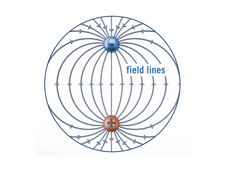-
Topics
subnavigation
Topics
Electromagnetic fields
- What are electromagnetic fields?
- Static and low-frequency fields
- Radiation protection relating to the expansion of the national grid
- High-frequency fields
- Radiation protection in mobile communication
Optical radiation
Ionising radiation
- What is ionising radiation?
- Radioactivity in the environment
- Applications in medicine
- Applications in daily life and in technology
- Effects
- What are the effects of radiation?
- Effects of selected radioactive materials
- Consequences of a radiation accident
- Cancer and leukaemia
- Genetic radiation effects
- Individual radiosensitivity
- Epidemiology of radiation-induced diseases
- Ionising radiation: positive effects?
- Risk estimation and assessment
- Radiation protection
- Nuclear accident management
- Service offers
-
The BfS
subnavigation
The BfS
- About us
- Science and research
- Laws and regulations
- BfS Topics in the Bundestag
- Links
Electric and magnetic fields

![]() Electric field caused by electric charges
Electric field caused by electric charges
When current flows, electrical appliances and wires generate two types of fields: electric and magnetic fields. An electric field is produced as soon as voltage is applied to an appliance or wire. Voltage is the prerequisite that enables current to flow when an appliance is switched on. When current flows, a magnetic field is produced in addition to the electric field. Thus, electrical appliances and wires, with current flowing through them, are surrounded by electric and magnetic fields.
Low-frequency electric and magnetic fields
Alternating current (AC) is mostly used for power supply. In Germany, AC has a frequency of 50 hertz (Hz). This means that the current alternates direction 100 times per second. The electric and magnetic fields alternate direction at the same rhythm as the current. As the frequency of 50 hertz is at the low-frequency end of the electromagnetic spectrum, these fields are referred to as "low-frequency" fields.

![]() Magnetic field caused by current
Magnetic field caused by current
High-frequency fields, by contrast, have a frequency ranging from 100 kilohertz to many millions of hertz. They are used, for example, in mobile communications and other wireless communication technologies.
Field strengths and units of measurement
The strength of an electric field increases with the voltage applied to the wire. The unit of measurement for voltage is the volt (V). The electric field strength is expressed in volts per metre (V/m).
The strength of a magnetic field around an electric wire depends on the strength of the current flowing through it. Current is expressed in amperes (A), the strength of the magnetic field in amperes per metre (A/m).
Magnetic flux density is mostly used instead of the magnetic field strength, as it additionally takes into account the "magnetisability" of the material penetrated by the magnetic field. The unit of measurement is tesla (T) or microtesla (µT). One microtesla is one-millionth of a tesla (0.000001 T).
| Electric Field Strength | Magnetic Field: Field Strength | Magnetic Field: Flux Density | |
|---|---|---|---|
| Units of Measurement | volts per metre (V/m) kilovolts per | amperes per metre (A/m) | 1 tesla = 1 volt times second per square metre microtesla (µT), |
Electric and magnetic fields in everyday life
The electric field strengths and the magnetic flux densities of electrical household appliances and house wiring within normal working distance are usually low compared to the existing limit values.
For some appliances higher magnetic flux densities are possible, however, in most cases the exposures are limited to small areas (such as for electric shavers, hair dryers). The exposure of the population to low-frequency fields is, therefore, usually low. This also applies to people living near high-voltage lines.
Electric and magnetic fields fall with increasing distance.
Shielding
Electric fields can be shielded easily, for example by building material. By contrast, a relatively elaborate shielding is required for magnetic fields.
State of 2017.10.20


